BIBLIOGRAPHY OF THE SLIDE RULE (1620-1909) from
HISTORY OF THE LOGARITHMIC SLIDE RULE
by FLORIAN CAJORI
SCHOOL OF ENGINEERING, COLORADO COLLEGE,
Colorado Springs, Col. 1909
1620 - Canon Triangulorum. Gunter (London)
1624 - Description and Use of the Sector, Cross-Staff and Other Instruments. Gunter (London)
1624 - L.usage de la règle de proportion en l.arithmétique et géométrie. Edmund Wingate (Paris)
1624 - Construction, description et usage de la règle de proportion. E. Wingate (Paris)
1626 - The Use of the Rule of Proportion. E. Wingate (London). Other editions, 1628, 1645, 1658,
1683
1626 - Arithmétique logarithmique. E. Wingate
1626 - Logocanon ou règle proportionnelle Henrion (Paris)
1630 - Of Natural and Artificial Arithmetic. E Wingate (London)
1632 - The Circles of Proportion and the Horizontal Instrument. William Forster. (London)
1633 - The Circles of Proportion and the Horizontal Instrument with an Addition, etc., and an
Appendix; The Declaration of the Two Rulers for Calculation
1672 - The Description and Use of an Instrument called the Double Scale of Proportion. Seth
Partridge (Written in 1657)
1677 - Timber Measure by a Line of More Ease, Dispatch and Exactness than any other way now in
use, by a Double Scale. Henry Coggeshall (London)
1682 - A Treatise of Measuring by a Two-foot Rule, which slides to a Foot. Henry Coggeshall
(London). (A Second edition of his 1677 book)
1690 - Cursus Mathematicus. Leybourn
1696 - Descriptio instrumenti Mathematici universalis, quo mediante omnes proportiones sine
circino at que calculo methodo facillima inveniuntur. Biler.
1699 - Pes mechanicus artificialis d. i. neu erfundener Maassstab, mi welchem alle Proportionen der
ganzen Mathematik ohne mühsames Rechnen u. s. w. können gefunden werden. Michael
Scheffelt (Ulm)
17xx - Arithmétique linéaire. Pouchet
17xx - Elémens du Pilotage. Pezenas
17xx - Encyclopédia méthodique (mathématiques). Johann Bernoulli III (1744 - 1807)
17xx - Encyclopédia Méthodique (marine), Article .Echelle anglaise. Lalande
17xx - Excise and Malt-Examiners. Assistant, Useful also for Supervisors and Officers. J. Vero
(London)
17xx - Mathematical Companion. Hunt
17xx - Pratique du Pilotage. Pezenas
1707 - The Young Mathematician.s Guide . . , with an Appendix on Practical Gauging. John Ward
(London)
1716 - Lexicon Technicum. Harris
1722 - The Art of Practical Measuring easily performed by a Two-foot Rule which slides to a Foot.
Henry Coggeshall. (A third edition of his 1677 book; a fourth edition, revised by John Ham,
was brought out in 1729, and a seventh edition in 1767)
1723 - Construction and Principal Uses of Mathematical Instruments. M. Bion (Translated by E.
Stone)
1726, 1743 - New Mathematical Dictionary. E. Stone (London)
1727 - Histoire de l.académie royale des sciences. Jean Baptiste Clairaut
1727 - Theatrum Arithmetico-Geometricum. Jacob Leupold (Leipzig)
1733 - The Description and Use of an Universal and Perpetual Mathematical Instrument. Benjamin
Scott (London)
1740 - Lives of the Professors of Gresham College. Ward
1740 - Theory and Practice of Gauging. Robert Shirtcliffc (London)
1744 - Mémoires de l.académie royale des sciences de l.année, 1741 (Paris)
1753 - Dictionnaire universel de mathematique et de physique. Tome I, Saverien
1755 - Royal Gauger. C. Leadbetter
1755 - The Royal Gauger. Leadbetter. 4th Ed. (London)
1761 - Beschreikung und Gebrauch der Logarithmischen Rechenstäbe. Johann H. Lambert
(Augsburg). New edition published in 1772
1766 - Abridge du Pilotage. Lemonnier (Paris)
1768 - Nouveaux essays pour determiner les longitudes en mer par les movements de la lune et par
une seule observatione. Pezenas (Paris)
1768 - (Treatise on Slide Rule.no name). Flower (London)
1775 - Treatise on Mathematical Instruments. John Robertson
1778 - Atlas céleste de Flamsteed, translated by Fortin
1777 - Lambert.s Briefwechsel, Vol. IV., p. 379
1778 - A Description of the Lines drawn on Gunter.s Scale, as improved by Mr. John Robertson.
William Mountaine (London)
1782 - Isaaci Newtoni Opera, Tom. IV. Edit. S. Horsley (London)
1787 - Philosophical Transactions. William Nicholson (London). Pt. II, pp. 246 - 252
1788 - Arithmetic. Nicholas Pike
1792 - A Complete Treatise on Practical Mathematics. John Macgregor (Edinburgh)
1794 - Arithmetic. George Fisher (Mrs. Slack) (London)
1797 - Nicholson.s Journal, Vol. I., p. 375
1798 - De la résolution des equations numériques de tous les degrés Lagrange (Paris)
1799 - Cadrans logarithmiques adaptés aux poids et mésures. A. S. Leblond (Paris)
1799 - Instructions sur l.Usage des Cadrans logarithmiques. François Gattey (Paris)
18xx - Dictionary of Authors. Art.Wingate, Edmund. S
18xx - Dictionary of National Biography. Sidney Lee
18xx - Dingler.s .Polytechnic Journal. (Berlin) .Many references
18xx - Dyck.s .Katalog Nachtrag.
18xx - English Cyclopaedia (Arts and Sciences)
18xx - Instructions for the use of A. W. Faber.s Improved Calculating Rule. C. N. Pickworth 72
18xx - Mem. dell. Accad. d. Scie. di Torino, T. XXV, Serie II
18xx - ; Philosophical and Mathematical Dictionary. Hutton
18xx - Philosophical Magazine,. Vol. 45, p. 387 (London)
18xx - Theorie du logarithmischen Rechenschieber. Franz Ruth
1800 - Dizionario enciclopedico delle matematische delli signori. Art.Logaritmiche. (Padova)
1802 - Mechanics. Magazine,. Vol. 5 (London)
1802 - Navigator. Bowditch
1802 - Nicholson.s Journal, Vol. 1, p. 452
1803 - De Ingenieur
1805 - Schoolmaster.s Assistant,. by Thos. Dilworth, brought out in Philadelphia by Robert
Patterson
1808 - Mathematisches Wörterbuch, I. Abtheilung, 3. Theil (Leipzig)
1810 - Explication et usage de l.arithmographe. Gattey (Paris)
1811 - Mathematical Tables. Hutton
1813 - Complete Measurer. Hawney (1st Edit. London, 1717) (Baltimore)
1813 - Complete Measurer. Hawney (Baltimore) . (The first edition of this book appeared in London
in 1717)
1814 - Dictionary of Pure and Mixed Mathematics. Peter Barlow (London)
1815 - Mathematical Dictionary. Charles Hutton
1815 - Journal des Mines,. Vol. 37, p. 101
1815 - Philosophical Transactions,. Part I (London)
1817 - Nicholson.s Journal,. Vol. 49, p. 187
1817 - Philosophical Magazine,. Vol. 49, p. 187 (London)
1820 - (Treatise on Slide Rule.title not given) . Collardean (Paris)
1823 - Dictionary of Mathematical and Physical Sciences. James Mitchell (London)
1823 - Quarterly Journal of Science, Literature and Arts, Vol. XVI, p. 357 (London)
1827 - Treatise on the Steam Engine. John Farey (London)
1827 - (Treatise on Slide-Rule.no title given). J. F. Artur (2e éd., 1845) (London)
1829 - Gill.s Technological Repository, Vol. IV, p. 33 (London)
1831 - Mechanics. Magazine. (London)
1832 - Brewster.s Edinburgh Encyclopaedia, 1st Am. Ed. (Philadelphia)
1837 - Instruction sur la manière de se servir de la règle à calcul. Mouzin. 3e éd. (Paris)
1837 - (Treatise on Slide Rule.no title given). 35 éd. Ph. Mouzin (Paris)
1840 - Annales des Ponts et Chaussées.
1840 - Mechanics. Magazine,. Vol. 32, pp. 101, 102 (London)
1841 - Mathematical Dictionary. Montferrier
1841 - Mechanics. Magazine
1842 - Penny Cyclopaedia. (Article on .Slide Rule. by De Morgan)
1843 - Anweisung zum Gebrauche des englischen Rechenschiebers. L. C. Schulz von Strasnitzki
(Wien)
1844 - On Coggeshall.s Sliding Rule (London)
1845 - Palmer.s Pocket Scale, with Rules for its use in solving Arithmetical and Geometrical
Problems (Boston)
1845 - (Treatise on Slide Rule.no title given). Aug. Hadéry (Paris)
1845 - On Bradford.s Sliding Rule (London)
1846 - Improvement to Palmer.s Endless Self-Computing Scale and Key; . . John G. Fuller (New
York)
1847 - Arithmetical Books from the Invention of Printing to the Present Time. De Morgan (London)
1850 - La Tachéométrie. J. Parro (Turin)
1851 - A Treatise on Slide Rule. L. Lalanne (London)
1851 - Instruction sur les règles à calcul. Lalanne
1851 - Règle à calculs modifieé. Mannheim (Metz)
1851 - Auleitung z. Gebrauche einiger logarith. getheilter Rechenschieber (Wien)
1852 - Gebrauchs-Anweisung fur Rechenstäbe (Paris)
1852 - Instruction sobre das reglas de calculo. (Paris)
1853 - Règle à Calcul expliquée. M. P. M. N. Benoit (Paris)
1853 - Bulletin de la sociéte d.encouragement pour l.industrie nationale
1853 - (Treatise on Slide Rule-no title given). P. M. N. Benoit (Paris)
1853 - Nouvelles Annales de Mathématiques, 1ére série, Tome XII, pp. 113 - 116
1854 - Nouvelles Annales de Mathématiques, Tome XIII,p.36
1854 - Mittheilungen des Gewerbevereins f. d. Königreich Hannover, p. 169
1856 - Ueber Visir- und Recheninstrumente. Ernest Sedlaczek (Wein)
1856 - Mechanics. and Engineers. Book of Reference and Engineers. Field Book. Charles Haslett
and Chas. W. Hackley (New York)
1857 - Par. Comptes rendus de 1. Acad. d. Sci. 44, p. 22 -
1859 - Teorica e practica del regolo calcolatore Quentino Sella (Torino)
1860 - Encyclopaedia Britannica. (Eighth Ed.)
1860 - Atti dell. Imp. Reg. Istituto veneto di scienze (Venice)
1861 - Handbook of the Slide Rule. W. H. Bayley (London)
1863 - Bull. de la sociéte d.encouragement pour l.industrie nationale (Paris)
1864 - Zeitschr. des Architecten- u. Ingenieur-Vereins f. d. Königp. Hannover, Vol. 10, p. 454
1865 - (Treatise on Slide Rule.no title given). Fr. René (Paris)
1866 - Report British Assn. (London)
1867 - Giornale di Matem. del Prof. Battaglini (Naples).
1868 - Appleton.s Dictionary of . . Engineering, Vol. I (New York)
1868 - Instruments et machines calculer (Paris)
1869 - (Treatise on Slide Rule.no title given. Translation of Q. Sella.s book.1859). Montefiore
Lévi (Paris)
1871 - Drawing and Measuring Instruments. J. F. Heather (London)
1871 - Torino Aec. Sci. Memorie
1872 - (Treatise on Slide Rule.no title given). Labosne (Paris)
1872 - Der Topographische Distanzmesser mit Rechenschieber. J. Stambach (Aaran)
1872 - Auleitung zum Gebrauche des Rechenkreises. R. Weber
1872 - Auleitung zum Gebrauch der Rechenscheibe. F. M. Clouth (Hamburg)
1874 - Annales du Gènie Civil. (Paris)
1874 - Deutsche Bauzeitung,. Bd. 8, p. 136
1874 - A Treatise on Mathematical Instruments J. F. Heather (London)
1875 - Die Grahpische Statik. (Zurich)
1875 - Treatise on Slide Rule.no title given). Claudel(Paris)
1875 - Proceed. London Math. Soc., Vol.6, p. 113 (London)
1876 - Notice sur les travaux et titres scientifiques. M. Léon Lelanne
1877 - Geschichte der Astronomie. R. Wolfe (München)
1877 - Catalogue of Instruments manufactured by W. F. Stanley (London)
1877 - Das . Stereometer, Körper-Messinstrument (Budapest)
1877 - Notes pratiques pour études de tracés. I. Moinot (Paris)
1877 - Zeitschr. des Vereins Deutscher Ingenieure
1878 - Méthodes graphiques pour l.expression des lois empiriques, etc
1878 - Veneto Istituto Atti. A. Favaro. Numerous references
1878 - La Nature. (Paris)
1878 - Spiral Slide Rule. George Fuller (London)
1879 - Statique Graphique. Favaro-Terrier. (Paris)
1880 - Proc. Engineers. Society of Western Penna
1881 - Knight.s American Mechanical Dictionary, Vol. II
1881 - The Slide Rule Simplified. Robert Riddell (Phildelphia)
1881 - Zeitschr f. Vermessungsw.
1881 - Dingler.s .Polytechnisches Journal. (Augsburg)
1883 - (Booklet on Slide Rule.no title given). Prof. Cherepashinskii (Moscow)
1885 - Leçons de statique graphique, 2ième partie, calcul graphique. A. Favaro, Translated into
French by P. Terrier (Paris)
1885 - (Treatise on Slide Rule.no title given). F. Guy, 3e éd. (Paris)
1885 - (Treatise on Slide Rule.no title given). Gros de Perrodil (Paris)
1885 - Van Nostrand.s .Engineering Magazine.
1886 - Regolo Calcolatore. Quintino Sella. 2 ed. Ital. (Torino)
1886 - Dingler.s .Polytechnisches Journal.
1886 - Gewerbeblatt aus Würtemberg
1886-7 - Transactions of Am. Soc. M. E., Vol. VIII, pp. 707 - 709
1888 - Centralblatt Bauverwaltung.
1888 - Railroad Gazette. (New York)72
1889 - A New and General Biographical Dictionary. Art. by Oughtred, quoted in .Nature,. Vol. 40,
p. 458
1889 - Portefeuille des Conducteure des Ponts et Chaussées (Paris)
1889-90 - Techaiker,. Vol. 12, p. 34
1890 - The Slide Rule and How to Use it. Charles Hoare (London)
1890 - Instruction pour la determination de la distance et de la différence d.altitude d.un objet à un
point de Station. J. Stambach (Aarau)
1890 - Dingler.s .Polytechnisches Journal.
1891 - Zeitschr. f. Vermessungsw.
1891 - Engineering News. 81
1891 - The Mannheim Slide Rule. W. M. Cox (New York)
1891 - Explanation of the Principle and Operation of the Mannheim Slide Rule. C. W. Crockett
(Troy, N.Y.)
1892 - International Cyclopædia. (New York) iv
1892 - Engineering and Mining Journal. (NewYork), Vol. 54, p. 130
1892-4 - Zeitschr. fur Vermessungsw.
1893 - Scherer.s Logarithmischgraphische Rechentafel (Kassel)
1894 - Schweizer. Bauzeitung,. Vol. 23
1894 - Engineering News,. Vol. 32, p. 103
1894 - Der Praktische Maschinen-Constructeur, Vol. 27,p.8
1894 - Engineering Record,. Vol. 30, p. 31
1895 - Nature. (London)
1896 - Engineering,. Aug. 7p 172 (London)
1896 - Engin. Ass.n of the South, Vol. 7 (Nashville, Tenn.) pp. 92-99
1897 - Handbuch der Vermessungskunde. W. Jordan, Bd. II, p. 134 (Stuttgart)
1897 - Engineering News,. Vol. 38, p. 291
1897 - Mechaniker,. Vol. 5
1898 - Règle à calcul, modèle spécial. A. Beghin (2e éd., 1902, Paris)
1898 - Yale Scientific Review,. Vol. 5, p. 47
1898 - Logarithmicon. E. Nash, p. 43 (Dublin)
1898-1904 - Encyklopädie d. Math. Wiss, (Leipzig)
1899 - Zur Theorie des Rechenschiebers. (Berlin)
1899 - Traité de Momographie. M. d.Ocagne (Paris), p. 361
1899 - Zeitschr. f. Vermessungsw.,. Vol. 28, p. 660
1899 - The Use of the Slide Rule. F. A. Halsey, p. 74 (New York)
19xx - Instructions for the Use of A. W. Faber.s Improved Calculating Rule. C. N. Pickworth
(London)
19xx - Instructions for the Calculating Slide Rule. Albert Nestler, p. 63 (Lahr, Baden)
19xx - Slide Rule Instructor for Instruction on Chad-wick.s Improved Slide Rule. John Chadwick
(London)
19xx - . Some Quick and Easy Methods of Calculating. R. G. Blame (London).
19xx - The Runnerless Slide Rule. F. F. Nickel
19xx - Treatise on a Box of Instruments. T. Kentish (Philadelphia).
19xx - Engineers. Slide Rule. W. Tonkes (New York) .
1900 - Zeitschr. f. Vermessungsw.,. Vol. 29, p. 233
1900 - Zeitschr. f. Instrumentenkunde,. Vol. 20, p. 336
1900 - Comptes rendus,. Vol. 131, p. 1289
1900 - Engineering News,. Vol. 43, p. 232
1901 - Le Système Métriques des Poids et Mesures. G. Bigourdan (Paris)
1901 - Oesterreich. Woch. ensch. f. d. offentl. Baudienst, Vol. 7, p. 72
1901 - American Machinist,. Vol. 24, p. 339 (New York)
1901 - Journal de Physique,. Sept
1901 - Nature,. Vol. 64, p. 523
1901 - Rechentafel System Proell (Berlin)
1901 - Slide Rule Notes. Lt.-Col. H. C. Dunlop, R.F.A. and C. S. Jackson, M. A. (London)
1901-1903 - Engineering News. (New York)
1902 - (Treatise on Slide Rule.no title given). Leclair (Paris) 58
1902 - Journal de l.Ecole Polytechnique. IIe sérié, septième cahier (Paris, p. 223)
1902 - The Slide Rule. E. M. Scofield (Chicago)
1902 - American Machinist,. Vol. 25, p. 1515
1902 - Rechenblätter. (Berlin)
1902 - Technological Quarterly,. Vol. XV, pp. 250-259 (Boston)
1902 - Nature,. Vol. 67, p. 141
1902 - Verhandl. d. Vereins z. Beförderung d. Gewerbefleisses. (Berlin), Vol. 21, p. 48
1903 - (Treatise on Slide Rule.no title given). Jully (Paris)
1903 - Treatise on Slide Rule.no title given). Dryssé (Paris)
1903 - Règle à calcul Mannheim (Paris)
1903 - Zeitschr. f. Mathematik. u. Physik. Vol. 48, p. 134
1903 - De Ingenierer,. Vol. 18, p. 94
1903 - Engineering Record. (New York)
1903 - Calculating Scale; a Substitute for the Slide Rule. W. Knowles (New York)
1903 - Some Quick and Easy Methods of Calculating. R. G. Blame (London)
1903 - Thacher.s Patent Calculating Instrument. Edwin Thacher (New York)
1904 - Engineer,. April 7, p. 346 (London)
1904 - Mathematical Gazette,. Vol. II, p. 337 (London)
1904 - American Machinist,. Vol. 27, Pt. II, p. 1376 (New York)
1904 - Nature,. Vol. 69, p. 485
1904 - American Machinist. (New York)
1904 - Comptes rendus,. Vol. 138, pp. 1266 - 1268 (Paris)
1904 - Slide Rule. E. M. Scofield (New York).
1905 - Calcul simplifié. Maurice d.Ocagne, 2e éd. (Paris)
1905 - Engineering News.
1905 - Mannheim and Multiplex Slide Rules. L. W. Rosenthal (Chicago)
1905 - Schweizerische Bauzeit,. Vol. 45 (Zurich)
1905 - Zeitschr. f. Instrumentenkunde,. Vol. 25, p. 385 (Berlin)
1905 - Engineering News,. Vol. 54, p. 487
1906 - American Machinist,. Vol. 29, Pt. II, p. 256 (New York)
1906 - The Slide Rule: a Practical Manual. C. N. Pickworth (London)
1906 - Catalogue of Keuffel & Esser Co. (New York)
1906 - Drawing Instruments. W. H. Harling (London)
1906 - Mathematical Drawing and Surveying Instruments. W. H. Harling (London)
1906 - American Machinist.
1906 - Electric Journal,. Vol. 3, pp. 116 - 118 (Pittsburg, Pa.)
1907 - Règle à calculs. P. Rozé, pp. 2, 3, 29 - 58 (Paris)
1907 - Theorie et usage de la règle à calculs. P. Rozé (Paris)
1907 - Electrical World,. Vol. 50, p. 402 (New York)
1907 - American Machinist,. Vol. 30, Pt. II, p. 76
1907 - Slide Rule Manual. John L. Hall (New York)
1907 - Catalogue of Drawing Materials. Kolesch & Co. (New York)
1907 - Complete Mechanical Slide Rule and How to Use it. F. T. Hodgson (New York) .
1908 - Der logarithmische Rechenschieber. E. Hammer. 4te Aufl. (Stuttgart)
1908 - Rendiconti del Circolo Matematico di Palermo, Tomo 26, pp. 1 - 63
1908 - Der logarithmische Rechenschieber. E. Hammer (Stuttgart)
1908 - Zeitschr. f. Mathem. u. Naturwissensch. (Unterricht)
1908 - Nature,. Vol. 77, p. 500
1908 - American Architect,. Feb. 12
1908 - American Machinist,. Vol. 31, p. 613
1908 - Engineering Record,. Vol. 58
1908 - How to Use Slide Rules. D. Petrie Palmedo (New York) .
1908 - Mannheim and Multiplex Slide Rules. LW. Rosenthal (New York) .
1908 - Slide Rule Calculator.
1909 - Catalogue of Keuffel & Esser Co. (New York)
1909 - Colorado College Publication,. Vol. I, No. 6
1909 - Electrical Review and Western Electrician,. Vol. 54, p. 399
1909 - Elektrotechnischer Anzeiger.
1909 - Engineering News,. Vol. 61, p. 266
1909 - Ein Rechenschieber mit Teilung in gleiche Intervalle auf der Grundlaged er
zahlentheoretischen Indizes. Fur den Unterricht Konstruiert (München)
1909 - Zeitschr. f. Math. u. Naturwiss. Unterricht, Vol. 40, p. 59
1909 - History of the Slide Rule. F. Cajori (New York)
1909 - Engineering News,. Vol. 62, p. 40
|

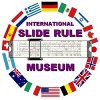 HOME
HOME


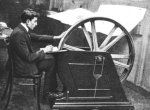

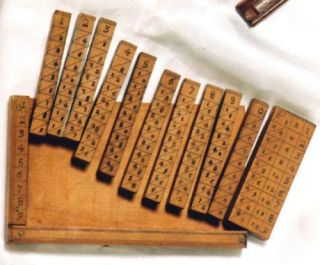


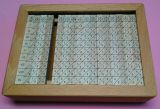
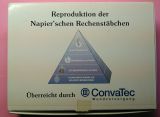

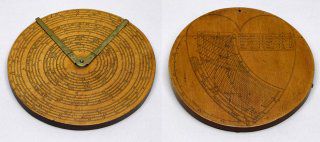







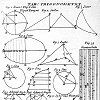

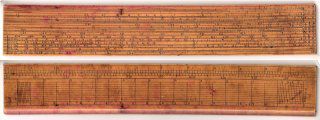



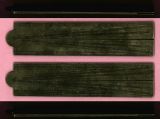
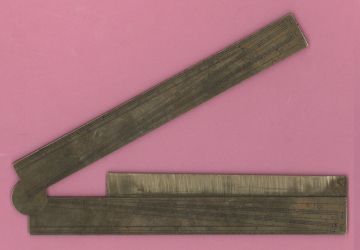


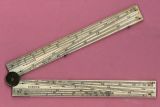

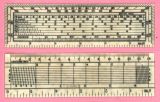 Celluloid Protractor c1920
Celluloid Protractor c1920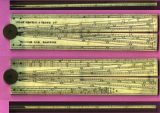



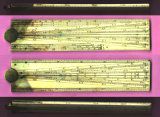



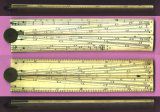




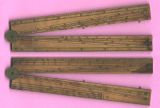

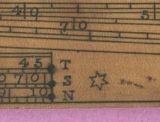






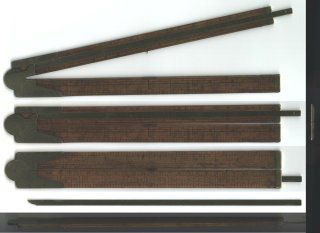
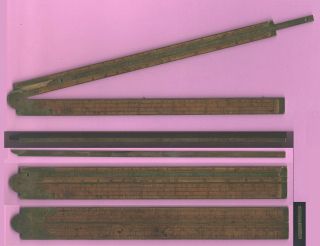
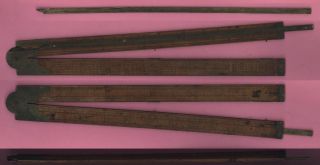

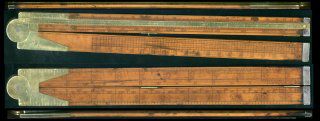



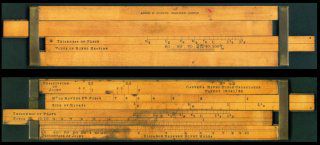

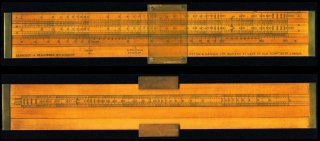
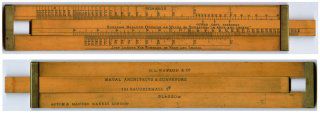

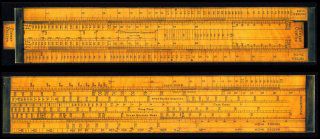

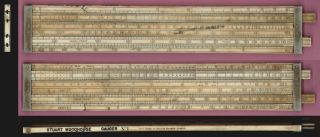
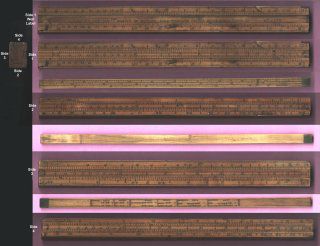
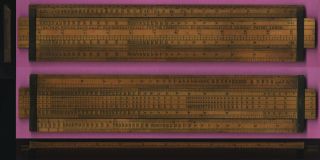
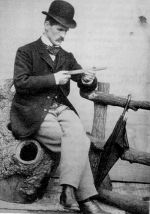
 Instructions (7.82MB PDF)
Instructions (7.82MB PDF)
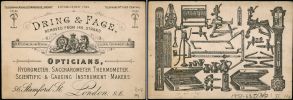
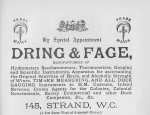

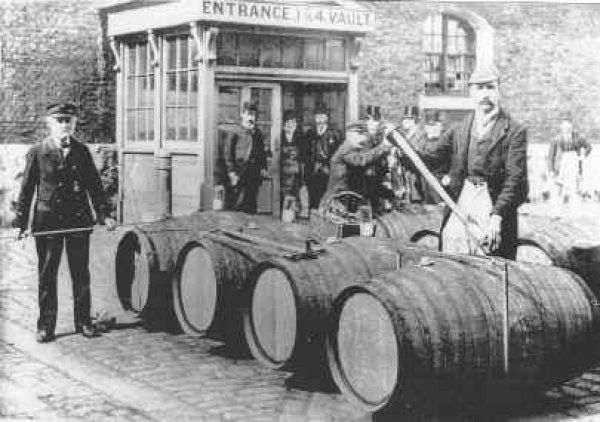

 Gifted by Phillip Rodley, Upperhutt New Zealand
Gifted by Phillip Rodley, Upperhutt New Zealand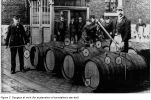


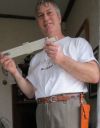

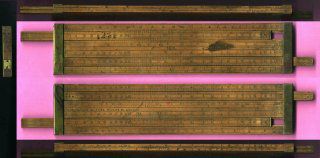

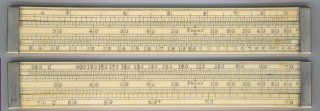
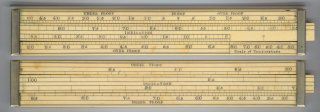
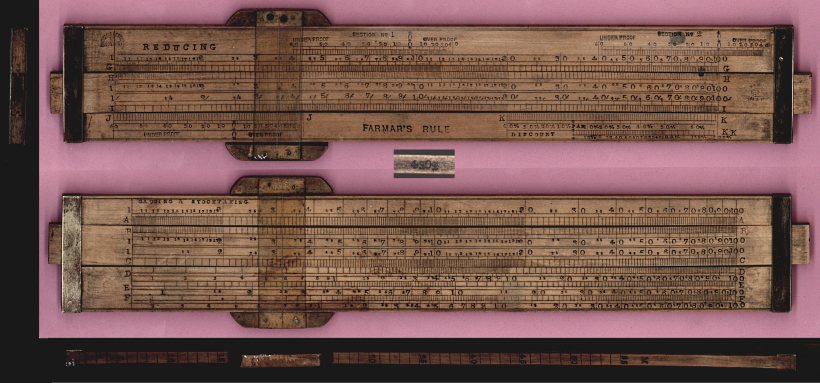

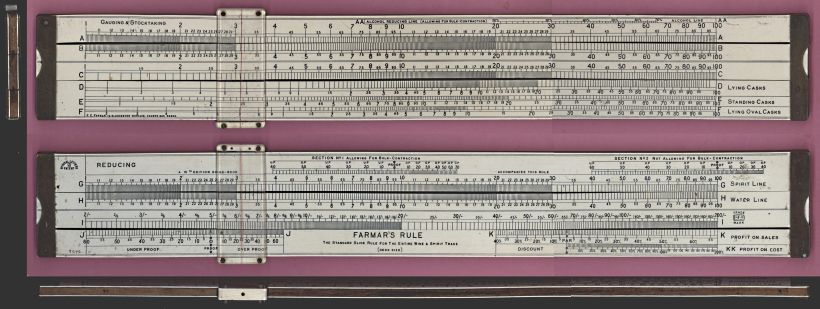

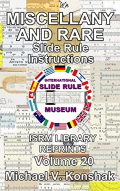
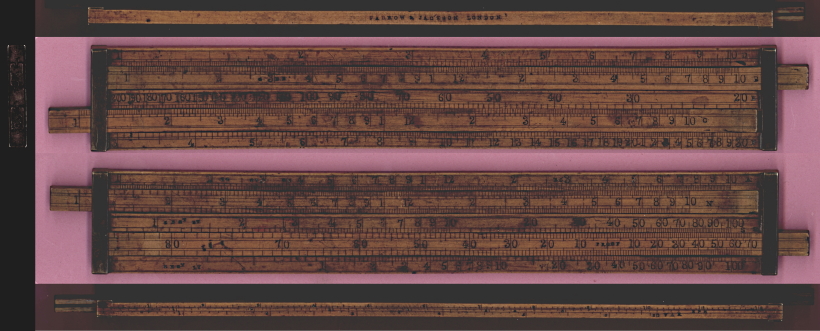

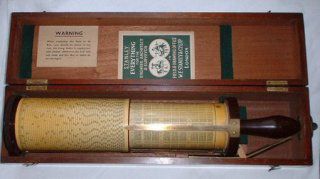

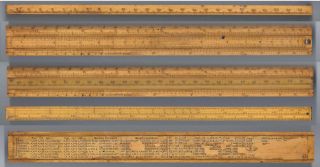

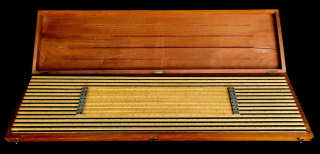

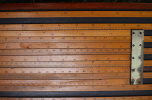
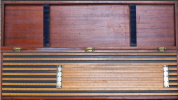
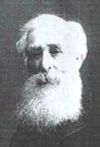




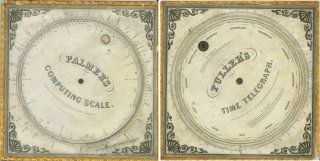
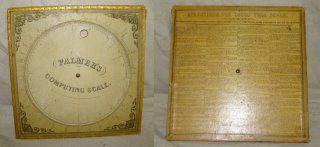
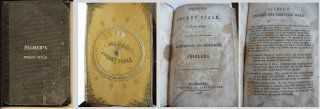
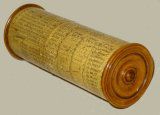

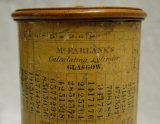


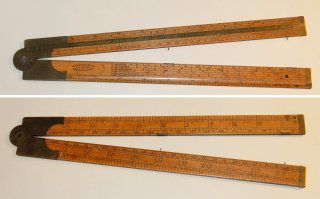
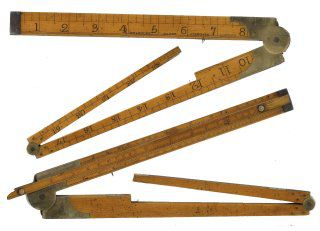
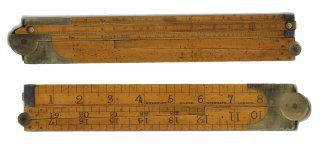
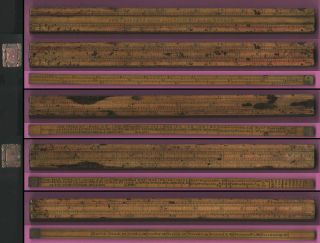

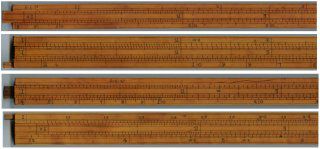

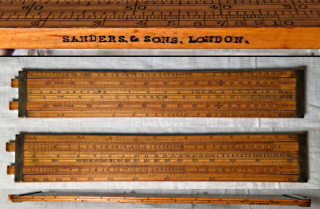

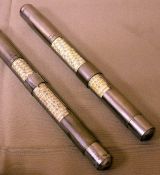
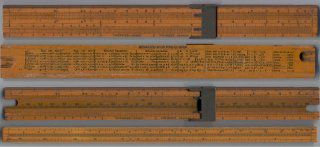
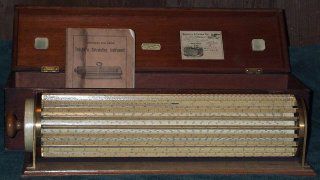

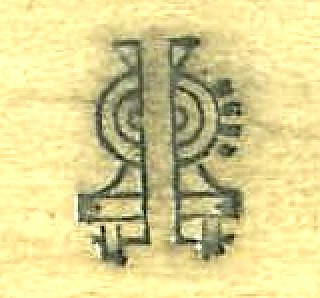


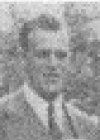
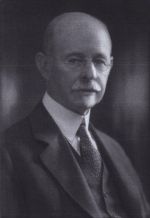
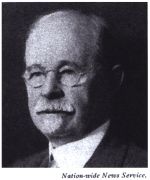

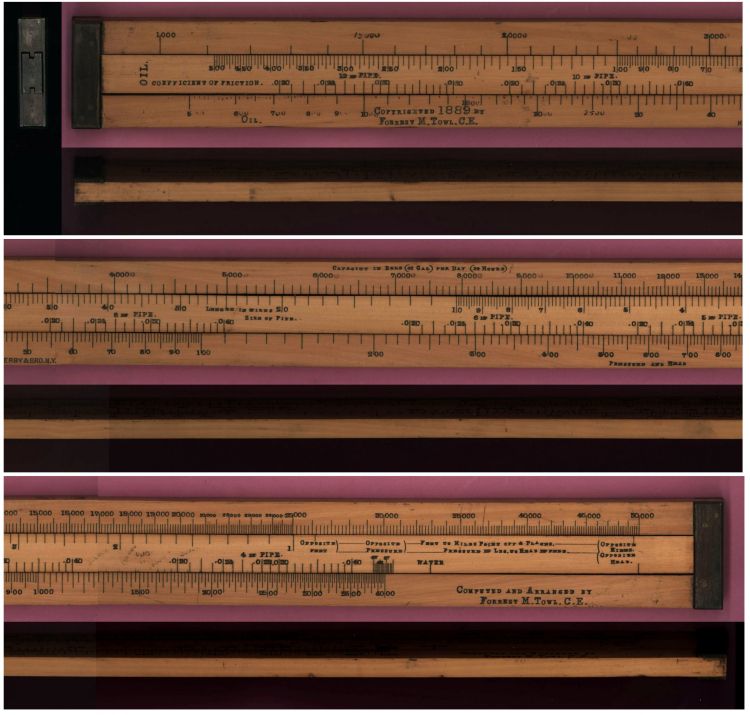
 Manual by Forrest M. Towl
Manual by Forrest M. Towl





